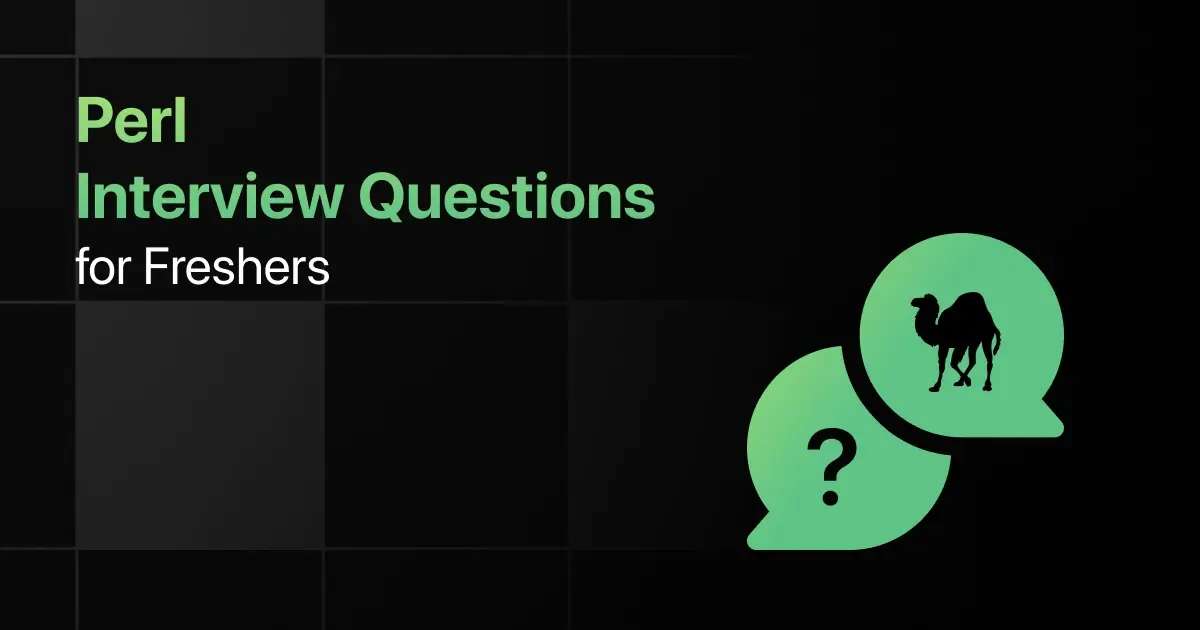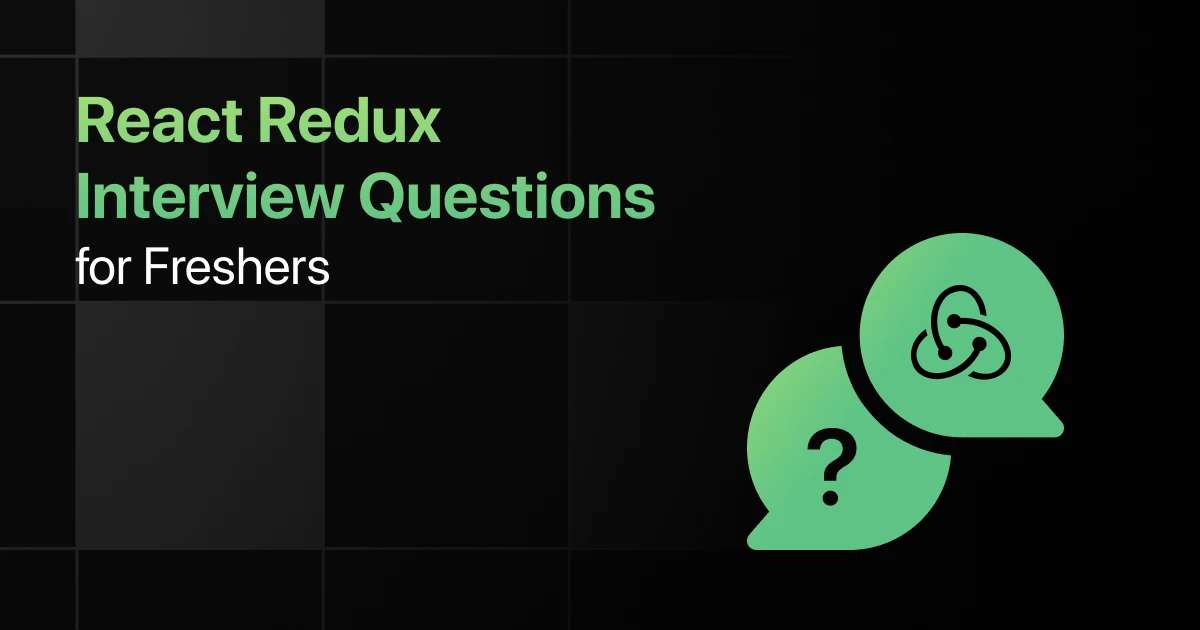Top Hadoop Interview Questions for Freshers

Are you preparing for your first Hadoop interview and wondering what questions you might face?
Understanding the key Hadoop interview questions for freshers can give you more clarity.
With this guide, you’ll be well-prepared to tackle these Hadoop interview questions and answers for freshers and make a strong impression in your interview.
Practice Hadoop Interview Questions and Answers
Below are the Hadoop interview questions for freshers with answers:
1. What is HDFS, and why is it important in Hadoop?
Answer:
HDFS (Hadoop Distributed File System) stores large data sets across multiple machines in a distributed manner. It is fault-tolerant and scalable.
2. What is a block in HDFS, and why is it important?
Answer:
A block is the smallest unit of data storage in HDFS. Blocks in HDFS are typically 128 MB, and they help in distributing large files across multiple nodes.
3. What are the main components of HDFS?
Answer:
The main components of HDFS are NameNode, DataNodes, and Secondary NameNode.
4. How do you read and write files in HDFS?
Answer:
Files are written to HDFS using the command hadoop fs -put and read using hadoop fs -cat or hadoop fs -get.
hadoop fs -cat /hdfs/path/localfile.txt
5. How does HDFS achieve fault tolerance?
Answer:
HDFS achieves fault tolerance through data replication. By default, data is replicated three times across different DataNodes.
6. What is MapReduce, and how does it work in Hadoop?
Answer:
MapReduce is a programming model used in Hadoop for processing large datasets in parallel. It consists of two main phases: the Map phase (processing) and the Reduce phase (aggregation).
7. What is the role of the mapper in MapReduce?
Answer:
The mapper processes input key-value pairs to generate intermediate key-value pairs.
8. What is the purpose of the reducer in MapReduce?
Answer:
The reducer aggregates or processes intermediate key-value pairs generated by the mapper.
9. What is a combiner in MapReduce?
Answer:
The combiner is an optional local reducer that reduces the volume of data transferred between the map and reduce phases by performing partial aggregation.
10. How do you submit a MapReduce job in Hadoop?
Answer:
Use the hadoop jar command to submit a MapReduce job.
11. What is YARN, and how does it enhance Hadoop?
Answer:
YARN (Yet Another Resource Negotiator) is Hadoop’s resource management layer, responsible for job scheduling and cluster resource management.
12. What are the main components of YARN?
Answer:
The main components of YARN are the ResourceManager, NodeManager, and ApplicationMaster.
13. How does YARN handle resource allocation?
Answer:
YARN allocates resources to applications in the form of containers, which are managed by the NodeManager on each node.
14. What is a container in YARN?
Answer:
A container in YARN is a unit of resource (memory, CPU) allocated to an application.
15. How do you monitor the status of YARN jobs?
Answer:
You can monitor YARN jobs through the ResourceManager Web UI or by using the command yarn application -list.
16. What is Apache Hive, and how does it interact with Hadoop?
Answer:
Hive is a data warehouse software that allows users to query data in Hadoop using HiveQL, a SQL-like language.
17. How does Hive store data in Hadoop?
Answer:
Hive stores data in HDFS and translates HiveQL queries into MapReduce, Tez, or Spark jobs.
18. What is Apache Pig, and how does it work?
Answer:
Apache Pig is a high-level platform for processing large datasets in Hadoop. Pig Latin scripts are used to define the flow of data processing.
19. How do you write a simple Pig script to load and process data?
Answer:
A simple Pig script loads data from HDFS, processes it, and stores the output.
filtered_data = FILTER data BY id > 100;
STORE filtered_data INTO ‘/output/result.txt’ USING PigStorage(‘,’);
20. What is Apache HBase, and how does it integrate with Hadoop?
Answer:
HBase is a NoSQL database that runs on top of HDFS. It provides real-time read/write access to large datasets.
21. How do you check the status of HDFS?
Answer:
You can check the status of HDFS using the hadoop dfsadmin -report command.
22. How do you list files and directories in HDFS?
Answer:
Use the hadoop fs -ls command to list files and directories.
23. How do you copy files from local to HDFS and vice versa?
Answer:
Use the hadoop fs -put to copy from local to HDFS and hadoop fs -get to copy from HDFS to local.
hadoop fs -get /hdfs/path/file.txt localfile.txt
24. How do you remove files from HDFS?
Answer:
Use the hadoop fs -rm command to remove files from HDFS.
25. How do you check the disk usage of an HDFS directory?
Answer:
Use the hadoop fs -du command to check the disk usage.
26. How does Hadoop achieve data locality?
Answer:
Hadoop achieves data locality by processing data on the same node where it is stored in HDFS, minimizing network traffic.
27. How do you implement data partitioning in Hive?
Answer:
In Hive, partitioning is done by dividing the table into sub-directories based on the values of one or more columns.
PARTITIONED BY (country STRING);
28. How does data compression improve Hadoop performance?
Answer:
Data compression reduces the storage space and speeds up data transfer between nodes, improving Hadoop performance.
29. Which file formats are commonly used with Hadoop to improve efficiency?
Answer:
Common file formats include Avro, Parquet, and ORC, which are optimized for Hadoop’s distributed environment.
30. How do you enable compression in Hadoop?
Answer:
Compression can be enabled by configuring the Hadoop job to use codecs such as Gzip, Bzip2, or Snappy.
mapred.output.compression.codec=org.apache.hadoop.io.compress.GzipCodec
31. How do you handle failures in Hadoop MapReduce?
Answer:
Hadoop automatically handles task failures by re-executing failed tasks on different nodes.
32. What is speculative execution in Hadoop?
Answer:
Speculative execution is a feature that runs backup tasks for slow-running tasks, improving overall job performance.
33. How do you debug a failed Hadoop job?
Answer:
You can debug a failed Hadoop job by examining the logs from the JobTracker or YARN ResourceManager, or by checking the task logs in the JobHistory server.
34. What is a counters feature in MapReduce?
Answer:
Counters in MapReduce track the number of times certain events occur during job execution, such as the number of records processed.
35. How do you set memory limits for MapReduce jobs in Hadoop?
Answer:
You can set memory limits using the mapreduce.map.memory.mb and mapreduce.reduce.memory.mb configuration parameters.
36. What is the purpose of the Secondary NameNode in Hadoop?
Answer:
The Secondary NameNode periodically takes snapshots of the NameNode’s metadata to prevent the NameNode from becoming a single point of failure.
37. How does Hadoop handle data skew in MapReduce?
Answer:
Hadoop handles data skew by using combiners, partitioners, and proper load balancing between map and reduce tasks.
38. What is the role of a partitioner in MapReduce?
Answer:
A partitioner determines how the intermediate data is split and sent to reducers.
39. How do you configure replication in HDFS?
Answer:
Replication is configured by setting the dfs.replication property in the HDFS configuration file.
40. What is the role of a shuffle and sort phase in MapReduce?
Answer:
The shuffle and sort phase organizes the intermediate output from the mapper before sending it to the reducer, ensuring that all values for a key are grouped together.
41. How do you implement authentication in Hadoop?
Answer:
Hadoop uses Kerberos for strong authentication to secure the Hadoop cluster.
42. How do you implement authorization in Hadoop?
Answer:
Hadoop supports authorization through ACLs (Access Control Lists) to control access to HDFS files and directories.
43. How do you secure data in HDFS?
Answer:
Data in HDFS can be secured using encryption at rest and encryption in transit.
44. How does Facebook use Hadoop for large-scale data processing?
Answer:
Facebook uses Hadoop to process and analyze petabytes of user data, optimizing the platform’s performance and user experience.
45. How does Yahoo! leverage Hadoop for its search engine?
Answer:
Yahoo! uses Hadoop for log processing, search engine indexing, and analyzing large datasets to improve its search engine algorithms.
46. How do financial institutions use Hadoop for fraud detection?
Answer:
Financial institutions use Hadoop to process large datasets in real-time to detect suspicious patterns and prevent fraudulent activities.
47. What are the typical use cases for Apache HBase?
Answer:
HBase is used for applications that require real-time read/write access to large datasets, such as social media platforms and analytics applications.
48. How does Hadoop handle large-scale machine learning?
Answer:
Hadoop can handle large-scale machine learning through integration with tools like Apache Mahout and TensorFlow, which use HDFS for distributed storage.
49. How do e-commerce platforms use Hadoop to improve customer recommendations?
Answer:
E-commerce platforms use Hadoop to analyze customer behavior, purchase history, and preferences, generating personalized product recommendations using data analytics.
50. How does the healthcare industry use Hadoop for big data analytics?
Answer:
The healthcare industry uses Hadoop to store and analyze large datasets such as patient records and genomic data, improving diagnosis and treatment decisions.
Final Words
Getting ready for an interview can feel overwhelming, but going through these Hadoop fresher interview questions can help you feel more confident.
With the right preparation, you’ll ace your Hadoop interview, but don’t forget to practice the Hadoop ecosystem, HDFS, MapReduce, and data processing-related interview questions too.
Frequently Asked Questions
1. What are the most common interview questions for Hadoop?
Common Hadoop interview questions often include topics like HDFS architecture, MapReduce framework, Hadoop ecosystem components (Pig, Hive, HBase), YARN, and data storage formats such as Avro and Parquet.
2. What are the important Hadoop topics freshers should focus on for interviews?
Freshers should focus on topics like Hadoop Distributed File System (HDFS), MapReduce, YARN, HiveQL for querying, understanding the Hadoop ecosystem tools, and basics of data ingestion using Sqoop and Flume.
3. How should freshers prepare for Hadoop technical interviews?
Freshers should get hands-on practice by setting up a Hadoop cluster (local or cloud), running MapReduce jobs, practicing queries in Hive, and understanding data processing workflows. Studying Hadoop architecture and use cases is essential.
4. What strategies can freshers use to solve Hadoop coding questions during interviews?
To solve Hadoop coding questions, freshers should break the problem down into smaller tasks, use the MapReduce paradigm effectively (map, shuffle, reduce), and focus on how data is distributed across nodes in HDFS for efficient processing.
5. Should freshers prepare for advanced Hadoop topics in interviews?
Yes, freshers should have a basic understanding of advanced topics like Hadoop security (Kerberos), performance tuning, integrating Hadoop with NoSQL databases (HBase), and running Hadoop in cloud environments, as these can set them apart.
Explore More Interview Questions
Related Posts


Top Perl Interview Questions for Freshers
Are you preparing for your first Perl interview and wondering what questions you might face? Understanding the key Perl interview questions …









